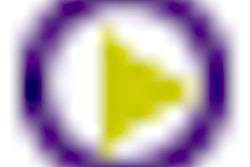







This reference guide was produced by the American Society of Radiologic Technologists, the membership association for medical imaging and radiation therapy professionals. It answers the most common questions about Continuing Education (CE), and is designed toensure that RTs understand how to earn, track and report CE credits.
Why CE, and who needs it?

In today's healthcare environment, being a professionalradiologic technologist means more than just doing a job well. Technological advances demand that RTs pursue continuing education to maintain competency and enhance patient care. CE benefits individual technologists, as well as the patients they serve.
CE is mandatory for all 220,000 RTs registered by the American Registry of Radiologic Technologists. The Registry randomly audits registration renewalsfor compliance with the CE program.If you are audited, you must be able to prove that you earned a specific number of CE credits within a certain period of time.
How many CE credits are needed?

All radiologic technologists registered by the ARRT must earn 24 CE credits every two years.This two-year period is called a biennium.
Your biennium is assigned by the Registry and is linkedto your birth month and the year of your initial ARRT examination. It begins on the first day of your birth month and ends two years later, on the last day of the month before your birth month.
If you are newly registered with the ARRT, your two-year CE reporting period begins on the first day of your birth month two calendar years after you initially became registered. For example, a radiologic technologist born on March 27 and who passed her first Registry exam in 1998 begins her biennial reporting period on March 1, 2000.She must collect 24 CE credits by February 28, 2002.
How do RTs earn CE credits?

There are three options for meeting CE requirements:
1. You can earn credits by completing educational activities that meet criteria established by the Registry.Of the required 24 CE credits, at least 12 must be Category A activities. The remaining 12 may be Category A or Category B activities.
The number of credits an educational activity is worth is based on how long it takes to complete the activity.CE credits are based on a 50-minute contact hour.For example, activities that require 50 minutes to complete earn 1 CE credit; activities that last 100 minutes earn 2 CE credits; activities that last 150 minutes earn 3 CE credits, and so on.
2. You can pass an entry-level certification exam in a discipline you have not previously passed and for which you are eligible.Passing an entry-level exam earns 24 Category A CE credits. Entry-level exams are:
- The Registry exams in radiography, nuclear medicine or radiation therapy.
- The Nuclear Medicine Technology Certification Board exam.
- The Medical Dosimetrist Certification Board exam in medical dosimetry.
- The American Registry of Diagnostic Medical Sonographers exam in diagnostic medical sonography, diagnostic vascular technology or diagnostic cardiac sonography.
3. You can pass an advanced-level exam for which you are eligible.Advanced-level exams are the Registry exams in mammography, cardiovascular-interventional technology, magnetic resonance imaging, computed tomography, general ultrasound and quality management. Passing an advanced-level exam earns 24 Category A CE credits.
What are Category A activities? 
In general, Category A activities are those that have been evaluated and approved by a Recognized Continuing Education Evaluation Mechanism, or RCEEM. When choosing your CE activities, look for RCEEM approval.
In addition, a few other activities automatically have Category A status regardless of whether they have been approved by a RCEEM. They include:
- Any activity approved by the American Medical Association (AMA Category 1) or through the American Nurses Credentialing Center (ANCC) mechanism, as long as it is relevant to the radiologic sciences.
- American Red Cross or American Heart Association CPR certification courses.
- Any activity that meets the Registry definition of an approved academic course. The Registry defines an "approved academic course" as a formal course of study offered by an accredited post-secondary educational institution in the biologic sciences, physical sciences, radiologic sciences, health and medical sciences, communication (verbal and written), mathematics, computers, management or education methodology, as well as certain social sciences courses, such as psychology and sociology.
Academic courses that are not accepted for Category A CE credit include classes in geography, history, literature, political science, fine arts, geology, astronomy, philosophy and religion. Physical education courses are evaluated on a case-by-case basis.
Other educational activities that have not been submitted to a RCEEM for approval but meet the Registry definition of a continuing education activity may be used as Category B credit. The individual RT and the activity's sponsor make this determination.
Where can I find CE credits? 
Home-study programs, seminars, videotapes, directed readings, Internet programs, CD-ROMs, conferences and in-services are just a few of the many ways you can earn CE credit. You also can receive credit for lecturing or publishing a scholarly article.
Take time to investigate the options available to you. To conduct a search of available CE courses, you can also use AuntMinnie.com's CME Database. The database covers both CE and CME courses.
How do I track my CE credits? 
Radiologic technologists must maintain proof that they participate in continuing education. When you complete any CE activity, be sure to obtain complete documentation from the sponsor.
When you attend a lecture, seminar or other type of presentation, sign the official sign-in record with your name and Social Security number. In addition, obtain a certificate of completion from the activity's sponsor. If you track your CE credits yourself, the Registry may ask to see this documentation.
If you do not want to track your CE credits yourself, you can rely on a Registry-approved record keeper to help you. The Registry will accept a report from an approved record keeper as proof of your participation in CE activities.
The ASRT's Evidence of Continuing Education program is an approved record-keeping system. All ASRT members are automatically enrolled in the ECE program.
To use the ECE tracking service, members submit documentation to the ASRT Department of Education as soon as possible after completing a continuing education activity.
Through the ECE program, ASRT maintains a record of its members' CE credits and mails them an annual printout showing the number of credits they have earned.For members who have earned at least 24 CE credits two months prior to the end of their biennium, the ASRT automatically transfers CE records to the Registry. Members also may view their CE records online at the ASRT Web site.
How else can the ASRT help me?
In addition to tracking CE credits for its members, the ASRT offers many other services designed to make continuing education affordable and accessible.
The ASRT is a leading developer of educational materials, such as home studies and videotapes.These materials are listed in the society's Educational Products Catalog and are sold to ASRT members at a discounted price.For a copy of the catalog, visit the ASRT Web site.
Also, ASRT members receive the professional journal Radiologic Technology, which publishes directed reading articles worth at least 12 CE credits per year. ASRT members can fulfill their entire Registry CE requirement by participating in the journal's directed reading program.
In addition, lectures and workshops during the ASRT Annual Conference and Radiation Therapy Conference provide opportunities for radiologic technologists to earn Category A CE credit.
For more information about ASRT's ECE program or membership benefits, go to www.asrt.org.
About the author 
The American Society of Radiologic Technologists is the oldest and largest national professional association for technologists in the radiologic sciences. The ASRT can be reached at:
American Society of Radiologic Technologists
15000 Central Ave. SE
Albuquerque, NM 87123-3917 Phone: 800-444-2778 or 505-298-4500
Phone: 800-444-2778 or 505-298-4500
www.asrt.org[email protected]












